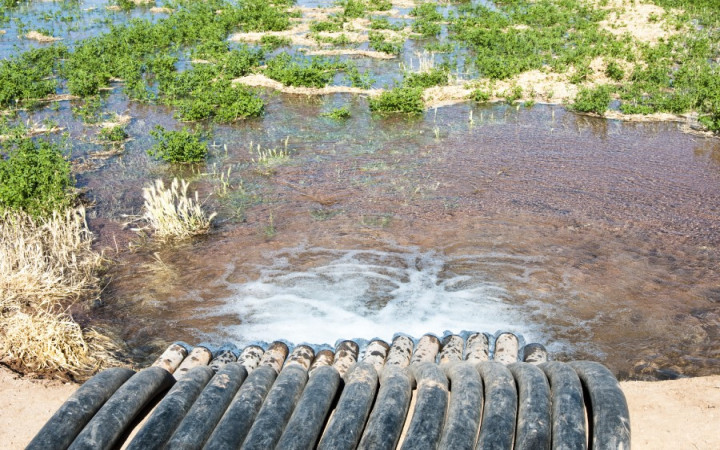Today’s Wonder of the Day was inspired by Stacie. Stacie Wonders, “siphons” Thanks for WONDERing with us, Stacie!
Have you ever tried to empty a large container of liquid? For example, let's say you have an above-ground pool. When autumn arrives and the leaves begin to fall, it's probably time to empty the pool to prepare it for winter.
If the pool doesn't have a drain, you may be forced to rely on buckets to empty it. Or, you could simply rely on science and siphon the water out! If you've ever used a siphon, you already know that all you need is a simple garden hose and a little time and soon that pool will be empty.
How does it work? All you need to do is put one end of the hose in the pool and the other end outside the pool, below the level of the water in the pool and in an area where you want the water to drain.
You could use your mouth to suck water through the hose to get the flow of water started, or you could use a small pump. Either way, once the siphon begins to work, it'll continue to drain the water from the pool until the water is gone or the end of the hose is lifted above the water level to stop the siphon.
Historians have traced the use of siphons back to ancient Egypt. Ancient Egyptians used siphons in agriculture to transfer water from canals to irrigation channels. Today's cotton farmers still use siphons in a similar way to help irrigate their crops.
Ancient Egyptians (along with people today) also used siphons in the winemaking process. Siphons helped them transfer wine from a large container to smaller containers. Placing the siphon hose in the middle of the container allowed them to increase the wine's purity by avoiding particles that floated at the top or sunk to the bottom of the container.
The first time you use a siphon, it may seem like magic. However, it's simply the principles of science at work. Exactly what principles are at work, though, is still a matter of debate. Even though siphons have been used for thousands of years, modern scientists are still arguing about exactly which forces make siphons work.
For much of scientific history, scientists have believed that siphons work because of the force of atmospheric pressure. A basic siphon consists of a tube in a larger container that goes up over a hump (the edge of the container) to empty out into a container at a lower level.
When liquid is sucked through the tube over the hump and begins to empty into the other container, a decrease in atmospheric pressure is caused at the highest point in the tube (where it passes over the hump). This decrease results in the atmospheric pressure on the surface of the liquid pushing liquid up into the tube toward the area of lower pressure.
While the atmospheric pressure theory seems to make sense, some scientists noted that it requires the presence of air. When tested in a vacuum, a siphon still worked, so it seemed that some other force must also be at work.
More recently, scientists who have studied siphons have theorized that the key force is gravity. When liquid is sucked up the tube and over the hump, the force of gravity continues to pull the liquid through the tube. This theory relies upon liquid cohesion, which means a continuous chain of cohesive bonds must exist in the liquid.
Some scientists refer to this as the chain model, because you can think of the water like a chain being pulled through the tube instead of a liquid. When you begin to pull the chain through the tube and over the hump, gravity will take over and continue to pull the entire length of the chain through the tube.
Unfortunately, most liquids don't necessarily have strong cohesive bonds to make them act this way. Other scientists have created flying droplet siphons and carbon dioxide gas siphons that feature gas bubbles that exist between liquid molecules.
It may be the case that atmospheric pressure, gravity, and liquid cohesion all work together to make siphons work the way they do. Scientists will continue to study siphons to figure out once and for all how they work. Maybe you could grow up to be the scientist who solves the mystery!





